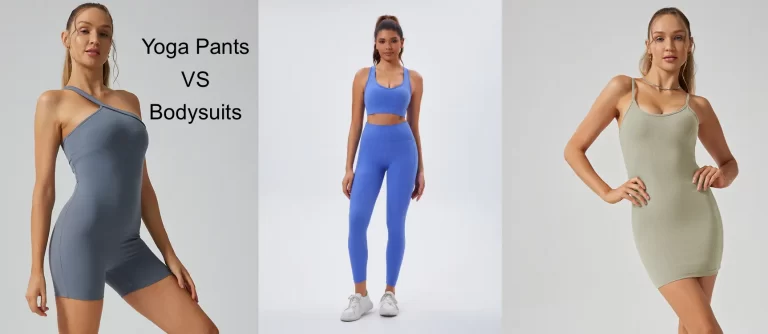In today’s sportswear market, functional fabrics have become a key factor in helping brands stand out. With consumers increasingly demanding high performance, comfort, and sustainability, brands that incorporate functional fabrics like moisture-wicking, anti-odor, and high-elasticity materials are gaining significant popularity. How can functional fabrics help sportswear brands improve their market competitiveness? This article will cover the types, functions, and unique advantages of functional fabrics and explain how they can strengthen a brand’s market position.
1. What Are Functional Fabrics, and Why Do Sportswear Brands Choose Them?
Functional fabrics are materials enhanced with specific properties through textile technology and chemical treatments. These fabrics are widely used in sportswear to improve the wear experience and meet athletic demands. Here are some common types of functional fabrics and their benefits:
• Moisture-wicking fabrics: Effectively absorb and quickly evaporate sweat, keeping the skin dry, which is ideal for intense physical activity.
• Anti-bacterial and odor-resistant fabrics: Inhibit bacterial growth, reducing unpleasant odors after exercise and maintaining long-lasting freshness.
• UV-protective fabrics: Shield the skin from harmful UV rays, making them suitable for outdoor sports enthusiasts.
• High-elasticity fabrics: Provide greater freedom of movement, ideal for yoga wear, running gear, and other sports that require extensive stretching.
• Eco-friendly recycled fabrics: Made from sustainable materials, they meet the growing demand for environmental responsibility among consumers.
2. Three Major Competitive Advantages of Functional Fabrics for Brands
2.1 Enhancing Wear Comfort and Athletic Performance
Functional fabrics, with their technical characteristics, provide consumers with a more comfortable wearing experience. For instance, moisture-wicking fabrics help keep the skin dry during exercise, preventing the discomfort of sweat adhering to the skin. Meanwhile, anti-odor fabrics prevent unpleasant smells post-workout, allowing consumers to feel confident in any situation. These fabrics not only improve the practicality of sportswear but also meet modern consumers’ high expectations for comfort and functionality.
2.2 Strengthening Brand Image and Market Differentiation
Choosing specific functional fabrics helps brands position themselves in the market. For example, outdoor sportswear with UV-protective fabric demonstrates the brand’s commitment to health, while products made from eco-friendly recycled materials reflect social responsibility, attracting consumers with similar values. By adopting these functional materials, brands can establish a professional, eco-conscious, or health-oriented image, thereby differentiating themselves in the marketplace.
2.3 Extending Product Lifespan and Boosting Customer Loyalty
High-quality functional fabrics can significantly extend the life of sportswear. For example, sportswear made from high-elasticity fabrics can retain its shape and elasticity for a long time, minimizing deformation and extending its usable life. Additionally, anti-odor fabrics reduce the frequency of washing, further enhancing the durability of the garment. This durability not only boosts customer satisfaction but also encourages repeat purchases, thereby increasing brand loyalty.
3. How to Effectively Use Functional Fabrics to Boost Brand Competitiveness?
3.1 Deeply Understand the Needs of the Target Market
Brands should first understand the needs of their target market before choosing the appropriate functional fabrics. For instance, moisture-wicking and UV-protective fabrics are ideal for outdoor sports enthusiasts, while eco-friendly materials better meet the demands of environmentally conscious consumers. By analyzing different consumer needs, brands can design products that better align with market expectations and increase their market adaptability.
3.2 Highlight Fabric Advantages Through Effective Marketing
Emphasizing the benefits of functional fabrics in marketing campaigns can significantly enhance product appeal. For example, showcase the quick-drying effect of moisture-wicking fabrics or the long-lasting freshness of anti-odor fabrics through videos. Additionally, inviting athletes or influencers to experience and review the products can strengthen the credibility of the product’s features, giving consumers a direct understanding of the product’s advantages.
3.3 Use Eco-Friendly Functional Fabrics to Meet Sustainability Demands
As environmental awareness grows, more brands are choosing eco-friendly functional fabrics, such as recycled materials. These eco-friendly practices not only demonstrate a brand’s social responsibility but also attract consumers who prioritize sustainability, creating more market opportunities for the brand.
4. How CozyActive Leverages Functional Fabrics to Enhance Sportswear Competitiveness
As a professional custom sportswear brand, CozyActive extensively applies functional fabrics in production to meet the needs of various athletic scenarios:
• Moisture-wicking fabrics: Used in running gear, workout clothes, and yoga wear, helping consumers stay dry and comfortable during exercise.
• Anti-odor fabrics: Ideal for high-intensity sportswear, ensuring freshness even after strenuous activity.
• High-elasticity fabrics: Especially suited for yoga wear and compression pants, offering optimal stretch and comfort.
• Eco-friendly recycled fabrics: Catering to the demand for sustainability, these are used across the entire sportswear line, providing an eco-conscious choice for customers.
Through the application of these functional fabrics, CozyActive provides clients with high-performance, high-quality sportswear, strengthening the brand’s professionalism and market credibility.
Frequently Asked Questions (FAQ)
Q1: How are functional fabrics different from regular fabrics?
A1: Functional fabrics are enhanced with special properties like moisture-wicking, anti-odor, and high elasticity, while regular fabrics typically lack these features and are more suited for everyday wear.
Q2: Which types of functional fabrics are suitable for sportswear?
A2: Moisture-wicking and high-elasticity fabrics are ideal for sportswear. Moisture-wicking fabrics keep the skin dry during intense workouts, while high-elasticity fabrics are perfect for sports that require flexibility, such as yoga and running.
Q3: What are the advantages of eco-friendly functional fabrics?
A3: Eco-friendly functional fabrics use sustainable materials, supporting environmental sustainability and reducing resource consumption. They’re not only eco-friendly but also meet consumers’ demand for green products.
Conclusion: How Functional Fabrics Help Sportswear Brands Stand Out in the Market
In a competitive market, functional fabrics give sportswear brands a unique advantage. By choosing high-performance materials like moisture-wicking, anti-odor, and eco-friendly recycled fabrics, brands can create differentiated products that meet consumers’ demand for high-performance and eco-conscious wear. CozyActive is dedicated to providing clients with premium functional sportswear, helping brands gain recognition and achieve greater success in the sportswear market.


